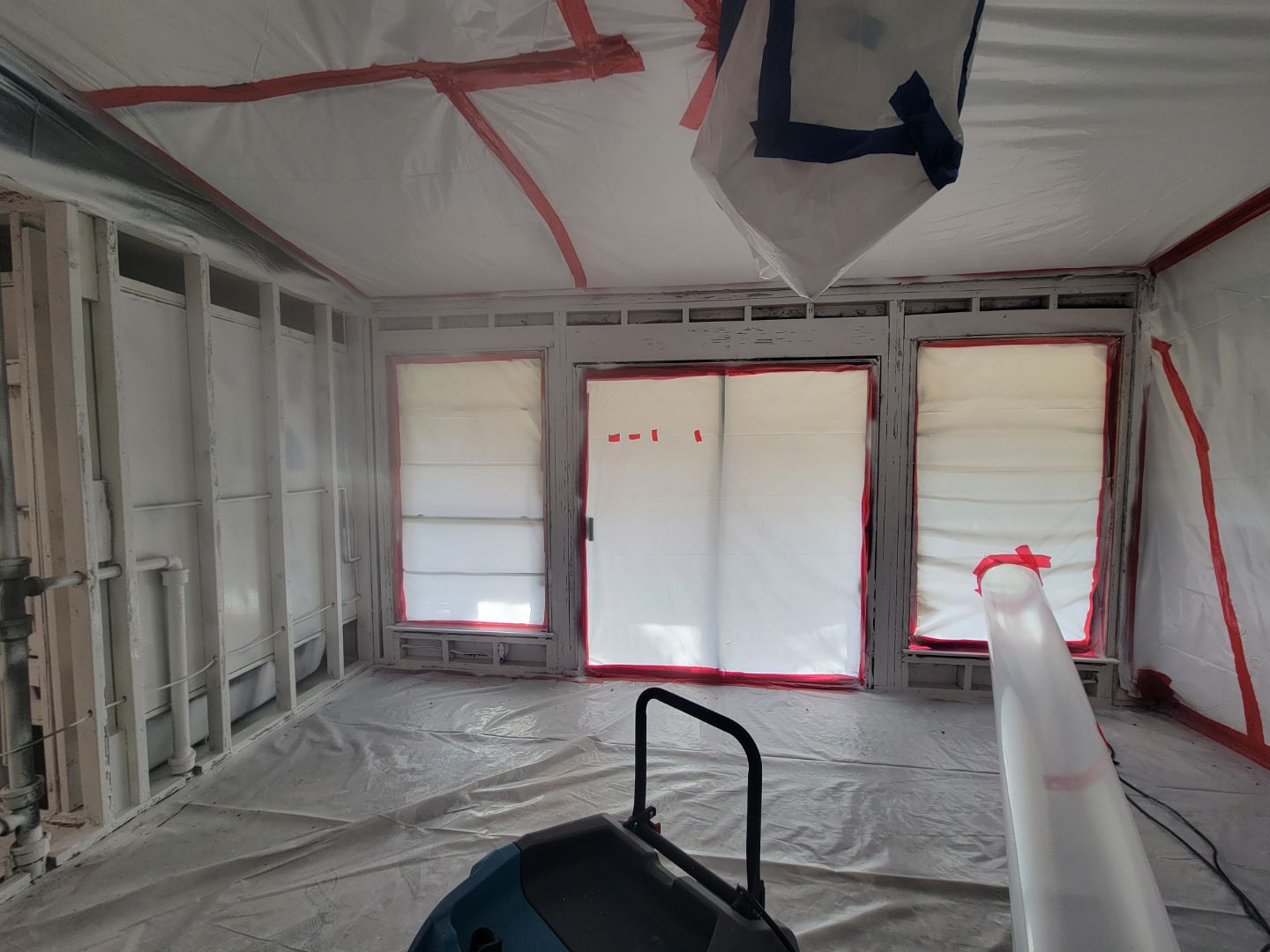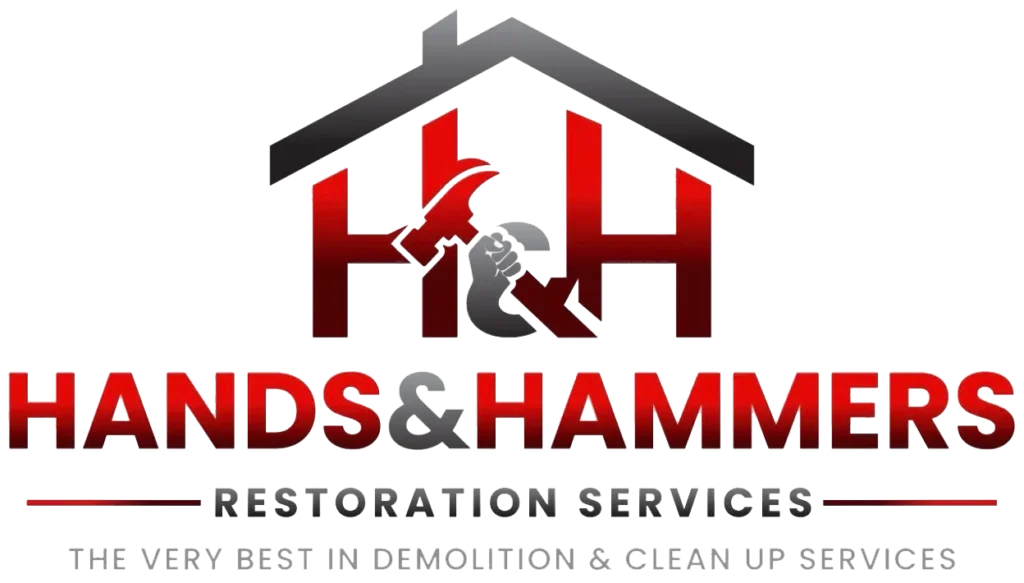- Mold hides behind walls, floors, and air systems. Musty odors, stains, or health symptoms often signal a deeper problem that professionals can detect and remove.
- DIY cleaning doesn’t stop mold from returning. Trained crews inspect, contain, filter air, remove damaged materials, clean deeply, dry all surfaces, and repair the damage.
- Call a mold remediation team early to protect your health and prevent damage—especially after leaks, recurring mold, or before buying or selling a home.
Mold doesn’t always start with a clear sign. It hides behind walls, under flooring, and deep in your air system. What looks like a faint stain or a musty smell can be the start of something bigger. Left alone, mold grows fast—and it doesn’t stop on its own.
If your home has ever had water damage or stayed damp for long, mold isn’t just possible. It’s likely. Many people try to clean it themselves. But surface sprays and home remedies don’t solve the problem. Mold needs full removal—not a quick fix.
What Is Mold and Why It Grows Indoors
Mold is a type of fungus that grows in damp places. It spreads through tiny spores in the air. These spores settle on wet surfaces and grow into colonies. Some molds are harmless. Others cause damage or make people sick.
Inside a house, mold often grows where there is water. It thrives in basements, crawl spaces, bathrooms, and behind walls. Places with leaks, flooding, or poor air circulation are prime areas for mold to settle in.
Homes in warm, humid regions face even greater risk. Even a small water leak behind a cabinet can support mold. Once it starts, it can spread quickly. If it reaches drywall, carpet, or insulation, you can’t just scrub it off. You have to remove the affected materials, clean the area, and stop the moisture.
When Mold Becomes a Bigger Problem
Mold isn’t always visible, it grows in areas you can’t see. But that doesn’t mean it stays quiet. Mold weakens materials and lowers indoor air quality. It can cause stains, odors, and property damage.
More importantly, mold can trigger health symptoms. Some people react with sneezing or coughing. Others get headaches or skin rashes. Long-term exposure can lead to more serious issues, especially in children, older adults, or people with asthma.
Here’s how to spot when mold is more than a minor issue—and why professional help is often the safest option.
1. You Smell a Musty Odor That Won’t Go Away
A musty smell often gives mold away. It may seem faint or strong, but it never smells clean. It often reminds people of wet socks or old paper. Mold spores and the gases they release create this odor.
Rain or humidity usually makes the smell stronger. If it sticks around even after you clean and open windows, mold is likely hiding somewhere inside. Restoration crews track down the source using moisture meters and thermal tools. They don’t make guesses. They locate the mold, confirm the damage, and start removal.
2. You See Spots or Discoloration on Walls or Ceilings
Mold shows up in more than one color. It may appear gray, green, brown, yellow, or black. It tends to grow under windows, in corners, or near ceilings. The paint may bubble or start to peel. The drywall might flake or change shape.
Some patches look dry and dusty. Others seem wet or sticky. If stains keep coming back after you clean them, the mold is growing deeper. Professionals remove all affected materials, not just the surface. They clean what can be saved and replace what can’t—stopping the mold for good.
3. You’ve Had a Leak, Flood, or Burst Pipe

Water creates the perfect condition for mold to grow. And it doesn’t take much. A slow leak inside a wall can feed mold for weeks before you notice anything.
After a flood, soaked materials must be dried within 24–48 hours. If not, mold spores will start forming. The same is true after a burst pipe or roof leak. Moisture trapped in insulation, wood, or drywall becomes mold’s food source.
Restoration crews remove soaked materials, dry the structure, and stop the mold from taking hold. It’s a race against time—and professionals have the right tools for it.
4. You or Your Family Start Having Unexplained Health Symptoms
Mold affects everyone differently. Some people have red eyes, itchy skin, or a runny nose. Others feel tired or dizzy for no clear reason. In many cases, these symptoms improve when the person leaves the house and worsen again at home.
Children and older adults are more likely to react to mold. People with asthma, allergies, or compromised immune systems often suffer more. If several people in your home feel unwell without a clear cause, mold could be hiding in the walls or air vents. Trained technicians know how to test the air, locate the source, and clean it thoroughly.
5. Your HVAC System Smells or Spreads Dusty Air
If the air from your vents smells stale or musty, mold might be inside the system. HVAC systems can suck in spores and blow them through the house. The air filters can’t always catch them.
You may notice that the smell gets stronger when the air kicks on. Or the dust seems to build up faster than usual. Mold inside ductwork spreads easily and grows fast in dark, moist spaces.
Cleaning the ducts and treating the entire system is part of what professionals do. They stop the cycle before it gets worse.
6. You Try to Clean It, but It Comes Back
Some homeowners scrub the visible mold with bleach or vinegar. It may disappear for a few days, but then it returns. That’s because surface cleaning doesn’t reach the root. Mold grows in porous materials like drywall or wood. It won’t go away unless those materials are treated or replaced.
Professionals know what materials can be saved and what must go. They seal off affected areas, use commercial-grade products, and follow a strict process to stop the mold from spreading again.
7. You See Signs of Mold in More Than One Area
If mold pops up in different rooms, it’s likely not a small issue. Multiple spots of mold may mean your home has a moisture problem, poor airflow, or hidden leaks.
It also means mold spores have spread. Spores float through the air and land wherever there’s dampness. They don’t stay in one place. Once you see it in more than one room, the chance of larger damage increases.
This is when mold remediation becomes a full-house issue. Restoration teams use containment methods to stop the spread and treat every area where mold has taken hold.
8. Building Materials Start to Break Down
Mold feeds on organic materials. That includes wood, drywall, wallpaper, and even insulation. Over time, these materials soften, crumble, or warp. You might notice sagging drywall, peeling wallpaper, or floors that feel soft or spongy.
These are more than cosmetic issues. They show that mold has begun to damage the structure. Leaving them alone won’t make them better. If materials fail, replacement is often the only safe step.
Licensed restoration contractors handle both the mold removal and the rebuilding. That way, your home becomes both clean and safe again.
9. You’re Buying or Selling a Home with Mold History
Homes with a mold history usually need inspection before any sale. If you’re buying a home that has water damage, check for hidden mold first. If you’re selling a home and notice signs of mold, deal with it before listing.
Most buyers and inspectors ask for mold clearance before closing a deal. If you try to clean it yourself, you may not meet insurance or legal standards.
Licensed mold remediation crews handle the job from start to finish. They provide test results, full reports, and proof of cleanup. This provides both parties with clear records and avoids future disputes.
10. You’ve Had Mold Before, and It Came Back
If mold returns after cleanup, something gets missed. Maybe a leak stayed active. Maybe the materials never dried fully. Mold spores often lie dormant and reactivate when the conditions change.
When mold keeps coming back, there’s a deeper issue at play. You need more than a surface wipe—you need a real fix.
Professional teams inspect the space, locate the source, and solve the problem. They remove the mold and fix what allowed it to grow in the first place.
What Professional Mold Remediation Involves
Mold remediation follows a step-by-step process. It begins with inspection and ends with full repairs. Along the way, it includes testing, removal, cleaning, drying, and sometimes reconstruction.
Here’s what a complete remediation service usually includes:
- Inspection and Testing: Specialists inspect the affected areas and collect air or surface samples. These tests confirm the type of mold and show how far it has spread.
- Containment: Crews seal off the work zone to stop mold from reaching clean areas. This protects the rest of the home and keeps people safe.
- Air Filtration: HEPA filters and negative air machines run continuously during cleanup. They capture mold spores and improve air quality.
- Material Removal: Teams take out damaged materials like drywall, insulation, or wood that mold has already compromised. They remove only what can’t be cleaned or saved.
- Deep Cleaning: Technicians scrub and disinfect all surfaces. They treat the area with commercial-grade products and apply deodorizing treatments to remove odors.
- Drying and Dehumidifying: Crews use industrial dryers and dehumidifiers to eliminate all moisture. They monitor the area until the humidity returns to normal.
Repairs and Rebuilding: After the cleanup, licensed contractors rebuild the damaged areas. They restore the space to a safe and healthy condition.
When It’s Time to Call a Mold Remediation Team
If you notice any of the signs above, don’t wait. Mold spreads quickly and hides deep inside walls, vents, and floors. What you see is often just a small part of the damage.
Most homeowners can’t trace mold to its source. Without the right tools, it’s easy to miss the full extent. That’s why trained crews step in. They find the hidden spots, remove the mold, and fix what caused it.
Waiting too long puts your health at risk. It also weakens your home. Calling a team early keeps the damage small and the cleanup easier.
Worried about mold spreading in your home? At Hands & Hammers Restoration Services, we handle every step of mold remediation—so you don’t have to deal with it alone. Call us now for fast help, expert service, and a team that’s ready to make your space clean, safe, and mold-free.


